|
|
|
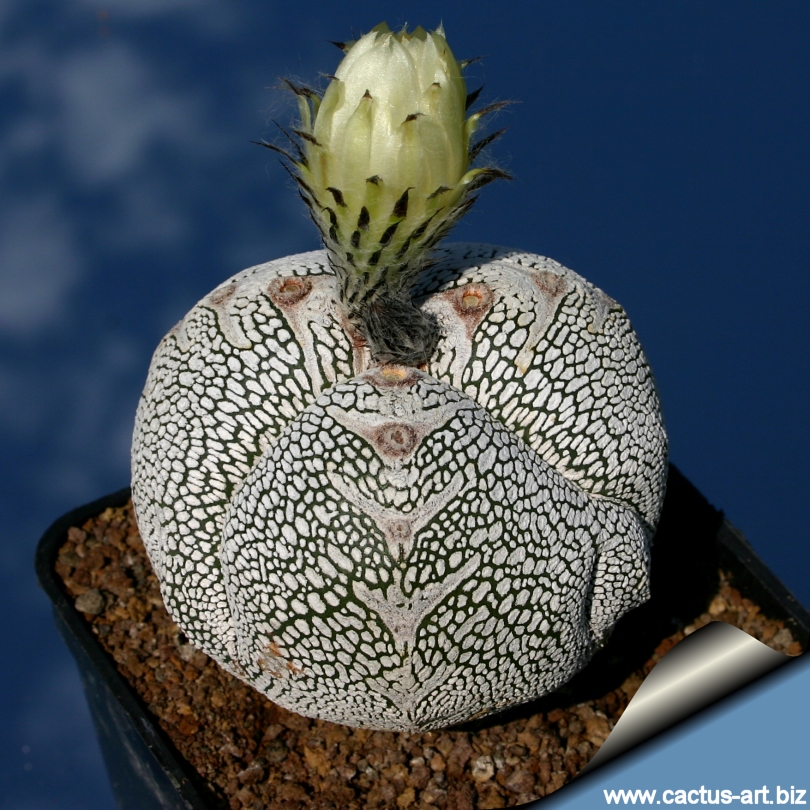
This is a very nice and super selected plant, 3 rounded
ribs
and
very nice V marking.
|
|
Description: Astrophytum
myriostigma cv Onzuka "tricostatum" with only three ribs - is one of
the most sought after cacti, that have fabulous markings much like the
‘kabuto’ asterias. There is a variety of variations in ribs shape and in
stems markings.
This cultivar tends to be unstable,
and some of the three ribbed specimens develop
additional ribs as they age. Old and big plants which maintain the
typical three ribbed shape are very prized. If you are so
inclined you can pay large sums of money for some of the best Japanese
forms.
Flowers: arise from the areole at the tip of the stem on mature
plant (at least 4-5 years old) they are large, funnel-shaped, yellow,
5-7 cm wide. Blooming intermittently throughout the warm months from
spring to autumn.
|
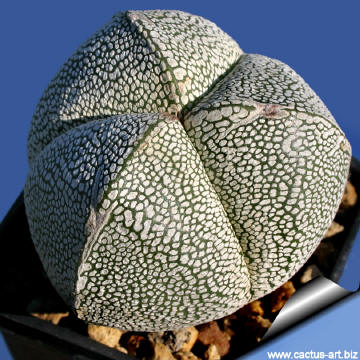 |
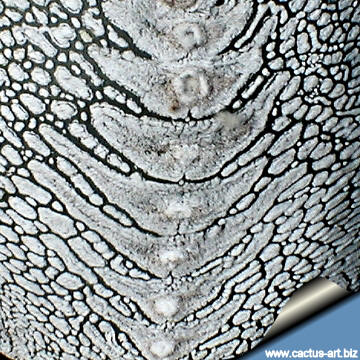 |
|
. |
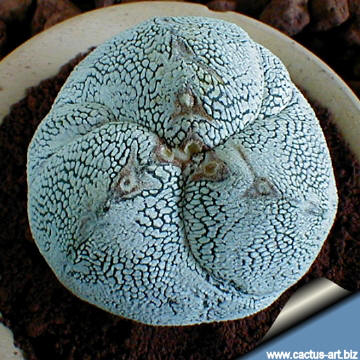 |
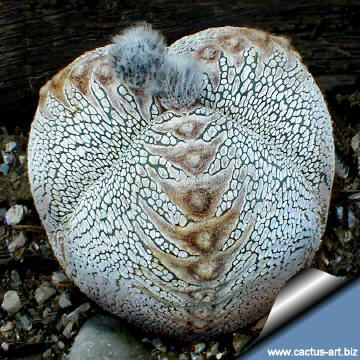 |
|
. |
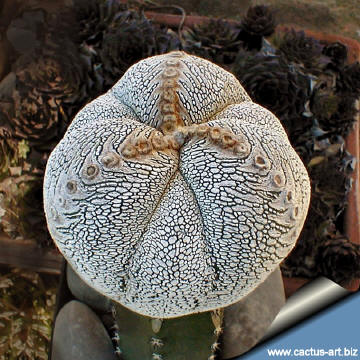 |
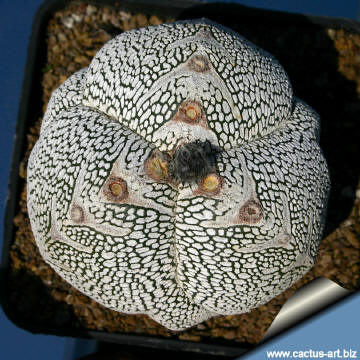 |
|


Advertising
|
|
|
|
.
|
|
|
Family:
Cactaceae (Cactus
Family)
Scientific name:
Astrophytum myriostigma Lemaire
Original description: Cactacearum Genera nova Speciesque novae et
omnium in Horto Monvillano cultarum: 4-6 1839
cv. ONZUKA tricostatum
Conservation status:
Listed in
CITES appendix 2.
Origin:
Japan, Garden origin (Nursery
produced cultivar)
Etymology: "tricostatum" just means it has 3 ribs.
There are some other varieties of the 3 ribs, such as "nudum
tricostatum",
"Fukuryiu tricostatum", "Onzuka
tricostatum",
"Onzuka Fukuryiu tricostatum" etc.
|
|
|
|
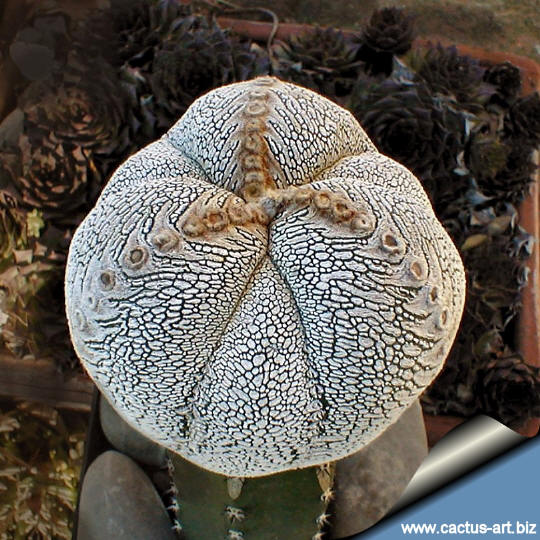
A. myriostigma cv. Onzuka tricostatum
fukuryiu
With false ribs between the true ribs.
Photo of conspecific
taxa, varieties, forms and cultivars of Astrophytum myriostigma:
Cultivation: Although regarded as a choice and difficult plant in cultivation it is
relatively easy to grow. It is sometime seen as a grafted plant but grows very
well on its own roots too. Use mineral well
permeable substratum with little organic matter (peat, humus). Water
sparingly from
March till October and keep perfectly dry in
winter
at temperatures from 5 to 15 degrees centigrade.
(but it is
Hardy to -7°C for short periods) In
the rest period no high atmospheric humidity!!
Sun Exposure:
Light shade to full sun.
Be careful: The epidermis of ONZUKA is harder than in
the normal myriostigmas and cracks easily if plants are overwatered.
Propagation:
By
seeds, remembering that
seedlings dislike strong
light and
dry conditions and need to be
repotted frequently. Eventually, as they become mature, they attain a
maximum size of 8-10 cm (20) cm in diameter. However, old plants become
senile and have
a tendency to succumb to
disease and a weak
root system. At this
stage,
as is well known, they
die suddenly. So, after they reach
10 cm in
diameter grow them slowly, and adopt a new repotting period, using
intervals of every 2 - 3 years. Additionally grow them under drier
conditions or with stronger sunlight.
But plants are often
grafted to accelerate growth as
they would generally take at least a five years to reach
maturity on their
own, but the grafted plants are typical rather tall growing, compared
with plants on their own roots that are usually more flat to the
ground. |
|